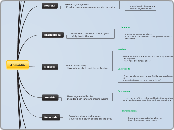Animalia
Porifera
-Lack true tissues
-Suspension feeders
Hexactinellida
-Have a skeleton made of four or six pointed siliceous spikes
-Believed to live anywhere from 15,000 to 23,000 years
Cnidaria
-Radially Symmetrical
-Have a gastrovascular cavity
Scyphozoa
-Have four part symmetry
-Have an internal material called mesoglea, which gives it structure (much like a skeleton)
Anthozoa
-Do not have a "medusa" stage in development
-Can reproduce sexually and asexually
Platyhelminthes
-Bilaterally Symmetric
-No organs or body cavity
Rhabditophora
-Have no digestive tract
-Unsegmented acoelomates
Rotifera
-Have organ systems
-Feed on microorganisms suspended in water
Eurotatoria
-Have jaws in the pharynx
-Have a digestive tube
Brachiopoda
-Live from 3 to more than 30 years
-Only live in the sea
Lingulata
-Have tongue-shaped shells
-The shell is composed of chitin, protein, and calcium phosphate
Mollusca
-Have a soft body
-Have a hard shell used for protection
Bivalvia
-Some attach to surfaces, while some bury themselves underground
-Most have two hinged shells
Gastropoda
-They live almost everywhere (wetlands, forests, rivers, etc.)
-Have shells (snails) or no shells (slugs)
Annelida
-Have segmented bodies
-Includes both land and marine worms
Polychaeta
-Live in some of the coldest and hottest temperatures
-The head projects over the mouth and contains antennae
Nematoda
-Parasitize plants and animals
-Covered in a touch cuticle on the body
Chromadorea
-Have a more sophisticated pharynx
-Have three esophageal glands
Arthropoda
-Have a segmented exoskeleton
-Have jointed appendages
Malacostraca
-The head has two antennae
-Some are hermaphroditic
Arachnida
-Have no antennae or wings
-They are carnivorous
Echinodermata
-Bilaterally symmetric as larvae
-Use internal canals to move
Echinoidea
-They are round in shape
-They are covered in spikes
Asteroidea
-They undergo regeneration
-They usually have five segments (legs)
Chordata
-Classified as invertebrates and vertebrates
-Chordate invertebrates: lancelets and tunicates
Leptocardii
-Have a translucent, fish-like body
-Have no true skeleton
